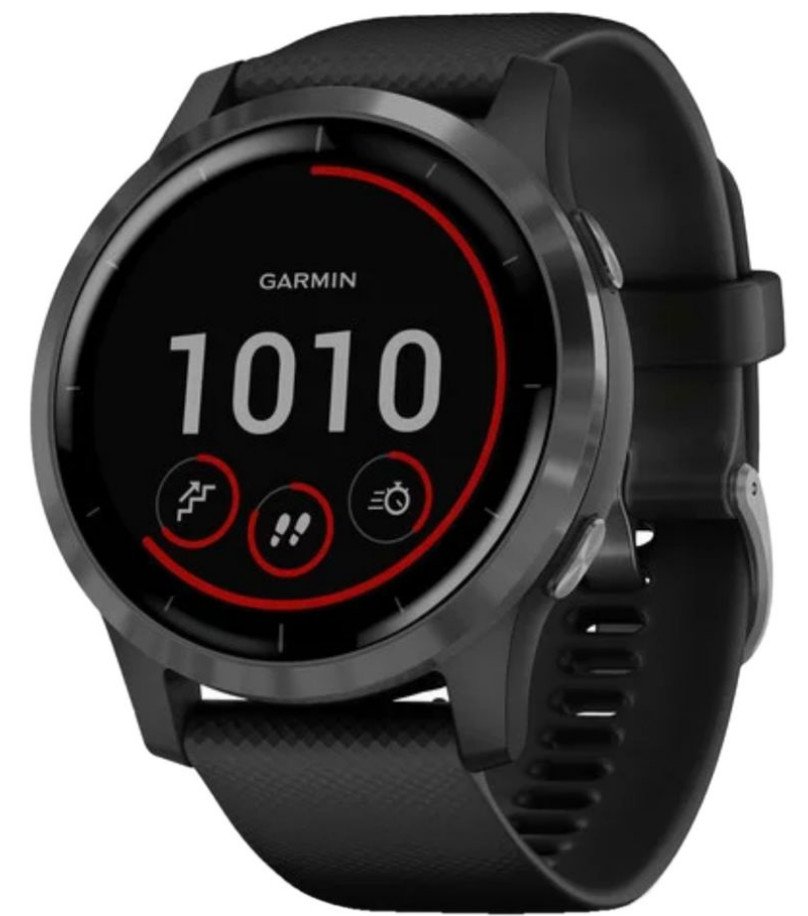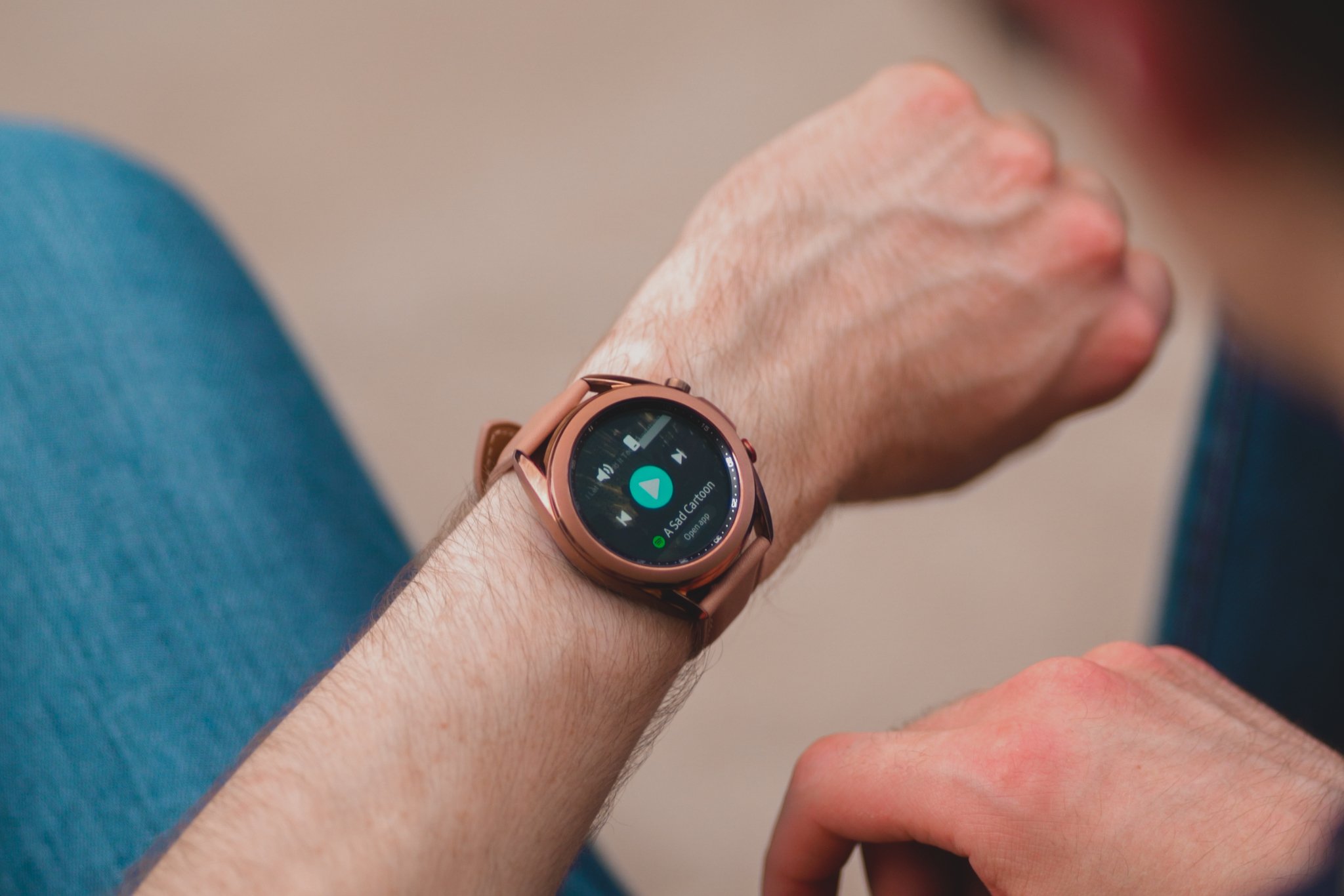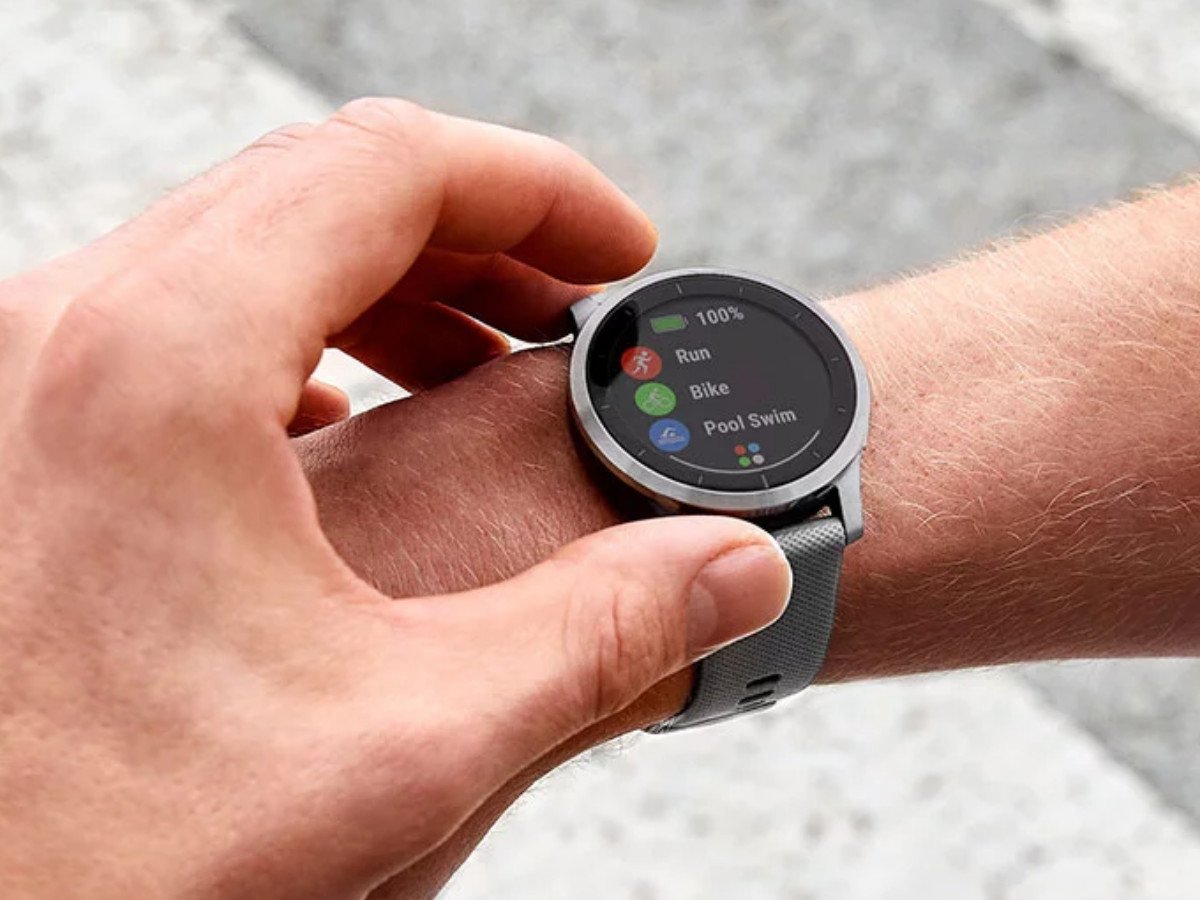Deciding between the Samsung Galaxy Watch 3 and the Garmin Vivoactive 4
- Optional LTE connectivity
- GPS, HRM, NFC
- Blood oxygen monitoring
- Improved health/fitness tracking
- Two size options
- Shorter battery life than predecessor
- Very expensive
- Tizen OS still not great with third-party support
If you've been on the hunt for a wearable that will keep you as connected as possible, you'll love the new Samsung Galaxy Watch 3. You'll enjoy many essential features, including onboard GPS, heart-rate monitoring, health/activity tracking, and NFC payments. You'll also have the option of choosing a model with LTE connectivity.
Detail-oriented trackingGarmin Vivoactive 4Pros- GPS, HRM, NFC
- Pulse Ox sensor
- Body Battery energy monitoring
- Excellent battery life
- Two size options
- No LTE connectivity
- Lacks AMOLED display
- Not a lot of app support
There's a lot to admire about the Garmin Vivoactive 4. In addition to detailed health/fitness tracking, heart-rate monitoring, and onboard GPS, you'll also have access to other helpful features. Some examples include on-screen workouts, respiration and hydration tracking, breathwork activities, music storage, and NFC payments.
Samsung Galaxy Watch 3 vs. Garmin Vivoactive 4 Making comparisonsWhen comparing two wearables such as the Samsung Galaxy Watch 3 and the Garmin Vivoactive 4, it can either be a no-brainer or an extremely tough decision. If you have your heart set on finding a truly connected piece of tech that covers all the bases, you'll have met your match with the new Galaxy Watch 3. It even has some new health and fitness perks that sweeten the deal a bit more for workout enthusiasts.
On the other hand, if you're solely focused on health and activity tracking and don't mind missing out on LTE connectivity, you might be better off choosing the Garmin Vivoactive 4, which is a major upgrade from its predecessor.
| Galaxy Watch 3 | Garmin Vivoactive 4 | |
|---|---|---|
| Dimensions | 45 x 46.2 x 11.1mm 41 x 42.5 x 11.3mm | 45.1 x 45.1 x 12.8mm 40.0 x 40.0 x 12.7mm |
| Display | 1.2" or 1.4" AMOLED | 1.1" or 1.3" transflective |
| Sensors | HRM, accelerometer, gyroscope, barometer, ambient light sensor, electrocardiogram | HRM, accelerometer, Pulse Ox sensor, gyroscope, compass, barometric altimeter, ambient light sensor |
| Connectivity | Optional LTE, Bluetooth 5.0 Wi-Fi b/g/n | Bluetooth, ANT+, Wi-Fi |
| Battery life | 2 to 3 days, varies by model | 7 to 8 days, varies by model |
| Water resistance | 5ATM+ IP68 | 5ATM |
| Colors | Stainless steel: Mystic Black, Mystic Silver, Mystic Bronze Titanium: Mystic Black | 45mm: Slate, Silver 41mm: Slate, Silver, Light Gold, Rose Gold |
| Optional LTE | ||
| Military-grade durability | ||
| Fall/Incident detection | ||
| Mobile payments |
While the new Galaxy Watch 3 still incorporates elements from the previous design, you can tell it's been refined and improved. It's thinner and sleeker this time around, which eliminates some of the bulk the predecessor had. You'll be able to pick between a 41mm and a 45mm model. The bigger model comes in stainless steel or titanium while the smaller model only comes in stainless steel. Your color options are Mystic Black, Mystic Silver, and Mystic Bronze.
If you owned the original Galaxy Watch at some point and still have some of the replaceable bands, you can put them to use. The new models use the same band sizes as the predecessor. The 41mm model uses 20mm bands and the 45mm model uses 22mm bands.
Battery life isn't too impressive this time around. On the smaller model, you can expect to get around two days of battery life depending on usage. When you're constantly using the health/fitness features and taking advantage of the always-on display, that figure will be on the lower end of the spectrum. The larger model has a slightly bigger battery, but you're still probably looking at a maximum of three days.
One of the reasons that Samsung eventually launched the Galaxy Watch Active models was to fill in the health/fitness blanks left by the Galaxy Watch. Now, the Galaxy Watch 3 offers plenty of health/fitness features, making it one of the best Samsung smartwatches out there. If you're a workout enthusiast, you'll definitely love these improvements. For starters, you'll have advanced running analysis that is designed to help runners improve their form. You'll also have improved sleep tracking.
The latest software update enables support for various features, including VO2 max, which measures maximum oxygen uptake during a workout. You can also measure the amount of oxygen in your blood. The one sensor the Galaxy Watch has over the Garmin Vivoactive 4 is the electrocardiogram (ECG), which can detect an irregular heartbeat. This feature still isn't active outside of South Korea yet, but it should be available later this year.
One of the many improvements on the Galaxy Watch 3 is the new built-in run coaching and recovery tools.
While the updated Tizen OS 5.5 deserves some recognition, it's still a letdown in terms of third-party app support. Samsung states that this new version of Tizen OS can do a better job of automatically detecting and tracking your workouts. Additionally, one of the many improvements on the Galaxy Watch 3 is the new built-in run coaching and recovery tools. You'll have access to over 120 home workout videos on the Samsung Health app. Simply pick a program, cast it to the TV, and view your stats as you go.
Garmin was ahead of Samsung in this respect, but the Galaxy Watch 3 now offers fall detection. This feature will recognize if a user falls when they're engaged in dynamic motion. Your device requires a network connection in order to notify your emergency contact of the fall and share your current location. Garmin calls it built-in incident detection but it functions the same. When using this feature on the Vivoactive 4, you'll need to be connected to your phone and it's only available when you're engaged in outdoor activities.
The Garmin Vivoactive 4 is made for fitness enthusiastsIt's not quite as common to offer two size options these days, but Garmin made a point to provide a smaller version of the Garmin Vivoactive 4, known as the 4S. The 4s is 40mm and the larger model is 45mm. All of the variants come in a sleek stainless steel case. The 45mm comes in Slate and Silver while the 40mm also comes in Light Gold and Rose Gold. You'll get a solid eight days of battery out of the 45mm model in smartwatch mode and six hours in GPS and music mode. The Vivoactive 4S has a smaller battery, so it dips down to seven days in smartwatch mode and five hours in GPS and music mode.
The Vivoactive 4 is packed with tons of health and fitness features, which is why it's one of the best Garmin smartwatches you can buy right now. It has a Pulse Ox sensor for monitoring blood oxygen saturation levels. Another unique feature is respiration tracking, which tracks the number of breaths you take per minute.
The combination of these two features also results in more insightful sleep data. There's also the Body Battery feature, which monitors your energy levels by gathering data from activity, sleep, stress, and heart rate variability (HRV). This will be instrumental in determining when to schedule workouts and rest based on your energy levels.
There are multiple options for how you want to exercise with the Garmin Vivoactive 4.
There are multiple options for how you want to exercise with the Garmin Vivoactive 4. You can choose from over 20 preloaded sports apps, including running, cycling, swimming, yoga, and more. You can also take advantage of the preset workouts from Garmin Connect or follow the training plans from Garmin Coach. You'll have over 40 on-screen workouts for strength training, cardio, yoga, and pilates. Some users might prefer to create customizable workouts, which is another option on this watch.
Other key features include onboard, 5 ATM water resistance, Garmin Pay, smartphone notifications, and music storage. If you're feeling stressed, you can use the stress tracking feature that is designed to help you relax. In fact, you can choose to receive relaxation reminders that will prompt you to do a short breathing activity when your stress levels are high. The breathwork activities monitor your stress and respiration to help you better understand how you're breathing.
Samsung Galaxy Watch 3 vs. Garmin Vivoactive 4 Which should you buy?The best way to determine which smartwatch you should buy is to figure out how you plan to use it. If you're set on finding a premium wearable that is connected in every possible way, you'll want to choose the Samsung Galaxy Watch 3. That is, of course, if you can stomach the steep price tag.
Remember that the starting point is for the 41mm Bluetooth model. If you go bigger and add LTE connectivity, be prepared to spend even more. The biggest downside of the Galaxy Watch 3 is the price tag. Some users may still be disappointed with the lack of third-party app support but if that is not a deal-breaker for you, then you'll be pleased with the Samsung Galaxy Watch 3.
Some users might be more content with a fitness-focused smartwatch that offers in-depth tracking. When you're not concerned about being connected with LTE, the Garmin Vivoactive 4 might be a better option for you. It's just as capable when it comes to health and fitness features. Unless you've fallen madly in love with the look and feel of the new Galaxy Watch 3 and can't imagine your wrist with any other wearable, the Garmin Vivoactive 4 is just as nice.
The best connected techSamsung Galaxy Watch 3Connected tech at its finest
From $400 at AmazonFrom $400 at Best BuyFrom $400 at Walmart
The Galaxy Watch 3 offers a new sleek design and comes with improved health and fitness tracking. With optional LTE connectivity and seamless pairing with Android phones, it's easily the best smartwatch for Android users right now.
Detail-oriented trackingGarmin Vivoactive 4Track every detail
$300 at Amazon$350 at Best Buy$319 at Walmart
If you want in-depth health and fitness tracking that's supported by a full week of battery life, the Vivoactive 4 is a wonderful choice. It also offers a Pulse Ox sensor, Body Battery energy monitoring, on-screen workouts, and more.



